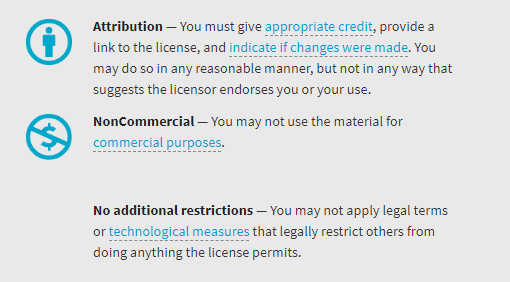Author Guidelines
1. Contributions will be accepted in Portuguese, Spanish, and English, and eventually in French and Italian.
2. Articles should be no more than 30 pages in length, and should be submitted in DOC (WORD and also in PDF) format, double-spaced in 12 point Times New Roman font, and in page size A4.
Only footnotes will be in size 10.
3. Phonetic transcriptions should use the International Phonetic Alphabet (IPA); we recommend the use of Unicode fonts, such as: Arial Unicode MS, Lucida Sans Unicode, Doulos SIL Unicode, Charis SIL Unicode, Gentium Unicode. Pages should be numbered.
For glosses and translations of the examples, the authors should be guided by the conventions of interlinear morpheme-by–morpheme glosses, as it’s suggested by Leipzig Glossing Rules, available at: www.eva.mpg.de/lingua/resources/glossing-rules.php
SMALL CAPS must also be used for category abbreviations in the interlinear glossing.
4. Reviews of recently published books on Native American languages will be accepted for consideration by the journal, and should be of no more than 15 pages and should follow the same format as articles.
5. Author’s name must not be registered in the body of the article, respecting the Double blind peer review system of evaluation. The/name(s) of the author/authors by extensive, academic affiliation in full, and e-mail address must be only included in the section SUBMISSIONS ON LINE - USERS REGISTRATION.
6. Notes: Notes should be at the bottom of the page, numbered beginning with 1. If there is a footnote reference in the article title or attached to an author's name, it should be given an asterisk (*). Notes should not be used for bibliographic references. References should be inserted in the body of the work after direct quotations, in the case of paraphrase, or when citing an author’s ideas. For example: according to Rodrigues (1986:77) ...references after citations (Seki 2000: 2006; Mihas 2014), and in cases of paraphrases (cf. Comrie 1989: 129).
7. Abstract: Two abstracts, one in English and one in Portuguese or Spanish, should follow the title of the article. Abstracts should be single spaced, and in 11 point Times New Roman font. They should be approximately between 150 to 250 words, and followed by a maximum of five key words, each one separated by a semicolon (;).
8. The bibliography, containing only those works cited in the text, must be in accordance with the following items:
a) References should be listed under the heading References, which should be found two lines below the end of the text.
b) The list of references, in alphabetical order by author, should begin two lines below the heading. Between references, use 1.5-line spacing. The author's last name should be given in capital letter only the first one. In case of multiple works by the same author, repeat again the author’s name.
c) Do not replace first and middle names of authors’ initials, unless the person cited normally uses those initials, e.g., Givón, T. (1995); Dixon R.M.W. (2011). The format of the references should follow the examples given below:
Books
Seki, Lucy (2000). Gramática do Kamaiurá: Língua tupi-guarani do Alto Xingu. Campinas, SP: Editora da UNICAMP.
D’Angelis, Wilmar; Veiga, Juracilda (orgs.) (1997). Leitura e escrita em escolas indígenas. Campinas, SP: ALB, Mercado de Letras.
Zúñiga, Fernando (2006). Deixis and alignment: Inverse systems in indigenous languages of the Americas. (Typological Studies in Language 70). Amsterdam: John Benjamins.
Chapters of books
Crevels, Mily (2007). La jerarquía de indexicalidad y voz en itonama. In Andrés Romero-Figueroa; Ana Fernández Garay; Angel Corbera Mori (eds.). Lenguas indígenas de América del sur, pp. 201-217. Caracas, Venezuela: Universidad Católica Andrés Bello.
Journal articles
Queixalós, Francisco; Dos Anjos, Zoraide (2006). A língua katukina – kanamari. LIAMES. Línguas Indígenas Americanas 6: 29-59.
Seifart, Frank; Echeverri, Juan Alvaro (2015). Proto Bora-Muinane. LIAMES. Línguas Indígenas Americanas 15(2): 279-311.
Dissertation and theses
Viola, Eduardo Vidal (2015). Pronomes pessoais e marcadores de pessoas nas línguas ameríndias. (Dissertação de mestrado em Linguística). Campinas: Universidade Estadual de Campinas, Instituto de Estudos da Linguagem.
Pacheco, Frantomé Bezerra (2001). Morfossintaxe do verbo Ikpeng (Karib). (Tese de doutorado em Linguística). Campinas: Universidade Estadual de Campinas, Instituto de Estudos da Linguagem
Electronic documents: References will be followed by the word retrieved from: (http://www.xxxx)
Accessed in (xx/xx/xxxx.)
Fabre, Alain (2005). Diccionario etnolingüístico y guía bibliográfica de los pueblos indígenas sudamericanos. Retrieved from (xxxxxxxxxx) (Accessed 25/03/2010.)
Annals and conference proceddings
Rodrigues, Aryon D. (1986). Silêncio, pausa e nasalização. Anais do 8º Encontro Nacional de Linguística, pp.153-158. Rio de Janeiro: Pontifícia Universidade Católica.
For additional information, consult the norms of the American Psychological Association APA (www.apastyle.org)


